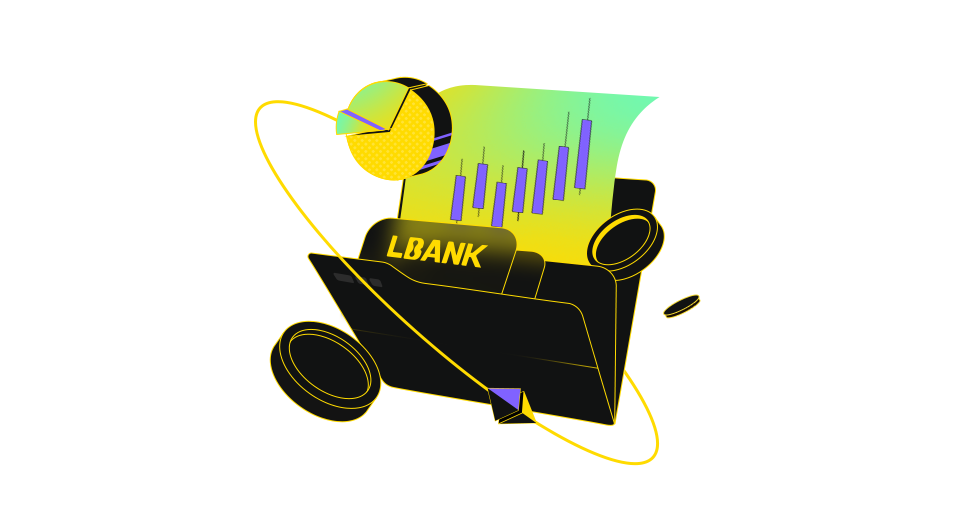How does blockchain technology's evolution impact investment opportunities?
2025-04-17
Beginners Must Know
"Unlocking New Avenues: The Evolution of Blockchain and Its Investment Potential for Beginners."
Blockchain Technology's Evolution and Its Transformative Impact on Investment Opportunities
The rapid evolution of blockchain technology has reshaped the financial landscape, introducing groundbreaking investment opportunities while presenting unique challenges. From its origins as the backbone of Bitcoin to its expansion into decentralized finance (DeFi), smart contracts, and digital ownership, blockchain is redefining how investors engage with assets. This article explores the key developments in blockchain technology and their implications for investment strategies.
The Foundation of Blockchain: Decentralization and Security
At its core, blockchain is a decentralized ledger that records transactions across a network of computers. Unlike traditional systems controlled by central authorities, blockchain operates without a single point of control, enhancing transparency and reducing the risk of fraud. Its security is bolstered by cryptographic algorithms and consensus mechanisms like proof-of-work (PoW) or proof-of-stake (PoS), which validate transactions and maintain data integrity. These features make blockchain an attractive infrastructure for secure and tamper-proof financial systems.
Smart Contracts and the Rise of DeFi
One of the most transformative applications of blockchain is the smart contract—self-executing agreements with terms encoded in code. Smart contracts eliminate intermediaries, reducing costs and increasing efficiency. They are the backbone of DeFi, a sector that offers decentralized alternatives to traditional financial services like lending, borrowing, and trading. Yield farming, a popular DeFi strategy, allows investors to earn high returns by providing liquidity to protocols. However, the high rewards come with significant risks, including smart contract vulnerabilities and market volatility.
NFTs and the Democratization of Ownership
Non-fungible tokens (NFTs) have revolutionized digital ownership by enabling the tokenization of unique assets like art, collectibles, and real estate. NFTs provide creators with direct access to global markets, bypassing traditional gatekeepers. For investors, NFTs represent a new asset class with potential for high returns, though their value is often speculative and subject to market trends.
Regulatory Developments and Challenges
As blockchain technology matures, governments worldwide are grappling with how to regulate it. While some countries embrace innovation, others impose strict rules to curb risks like money laundering and fraud. Regulatory uncertainty can create market instability, making it essential for investors to stay informed about legal changes that could impact their portfolios.
Recent Innovations Shaping the Future
1. Central Bank Digital Currencies (CBDCs): Many central banks are exploring CBDCs to modernize payment systems. These digital currencies could streamline transactions, reduce costs, and improve financial inclusion, but they may also disrupt traditional banking.
2. Sustainable Blockchain Solutions: Concerns about the environmental impact of energy-intensive blockchains like Bitcoin have spurred efforts to adopt greener alternatives. Ethereum’s shift to PoS and the use of renewable energy are steps toward sustainability, which could attract environmentally conscious investors.
3. Cross-Chain Interoperability: Projects like Polkadot and Cosmos aim to connect disparate blockchains, enabling seamless asset transfers and expanding investment opportunities across ecosystems.
4. Blockchain in Traditional Finance: Major financial institutions are integrating blockchain for settlements, clearing, and fraud prevention. This adoption could enhance efficiency and reduce costs, bridging the gap between traditional and decentralized finance.
Potential Risks and Mitigation Strategies
Despite its promise, blockchain investing carries risks. Market volatility can lead to sudden price swings, while regulatory shifts may alter the viability of certain assets. Security breaches, though rare, can occur due to flaws in smart contracts or exchanges. To mitigate these risks, investors should diversify their portfolios, conduct thorough due diligence, and stay updated on technological and regulatory trends.
Conclusion
Blockchain technology’s evolution has unlocked unprecedented investment opportunities, from DeFi and NFTs to CBDCs and interoperable networks. While the potential for growth is immense, the landscape is complex and fraught with risks. By understanding the technology’s advancements and challenges, investors can make informed decisions and capitalize on blockchain’s transformative potential. As the sector continues to innovate, staying adaptable and well-informed will be key to navigating this dynamic and rapidly evolving market.
The rapid evolution of blockchain technology has reshaped the financial landscape, introducing groundbreaking investment opportunities while presenting unique challenges. From its origins as the backbone of Bitcoin to its expansion into decentralized finance (DeFi), smart contracts, and digital ownership, blockchain is redefining how investors engage with assets. This article explores the key developments in blockchain technology and their implications for investment strategies.
The Foundation of Blockchain: Decentralization and Security
At its core, blockchain is a decentralized ledger that records transactions across a network of computers. Unlike traditional systems controlled by central authorities, blockchain operates without a single point of control, enhancing transparency and reducing the risk of fraud. Its security is bolstered by cryptographic algorithms and consensus mechanisms like proof-of-work (PoW) or proof-of-stake (PoS), which validate transactions and maintain data integrity. These features make blockchain an attractive infrastructure for secure and tamper-proof financial systems.
Smart Contracts and the Rise of DeFi
One of the most transformative applications of blockchain is the smart contract—self-executing agreements with terms encoded in code. Smart contracts eliminate intermediaries, reducing costs and increasing efficiency. They are the backbone of DeFi, a sector that offers decentralized alternatives to traditional financial services like lending, borrowing, and trading. Yield farming, a popular DeFi strategy, allows investors to earn high returns by providing liquidity to protocols. However, the high rewards come with significant risks, including smart contract vulnerabilities and market volatility.
NFTs and the Democratization of Ownership
Non-fungible tokens (NFTs) have revolutionized digital ownership by enabling the tokenization of unique assets like art, collectibles, and real estate. NFTs provide creators with direct access to global markets, bypassing traditional gatekeepers. For investors, NFTs represent a new asset class with potential for high returns, though their value is often speculative and subject to market trends.
Regulatory Developments and Challenges
As blockchain technology matures, governments worldwide are grappling with how to regulate it. While some countries embrace innovation, others impose strict rules to curb risks like money laundering and fraud. Regulatory uncertainty can create market instability, making it essential for investors to stay informed about legal changes that could impact their portfolios.
Recent Innovations Shaping the Future
1. Central Bank Digital Currencies (CBDCs): Many central banks are exploring CBDCs to modernize payment systems. These digital currencies could streamline transactions, reduce costs, and improve financial inclusion, but they may also disrupt traditional banking.
2. Sustainable Blockchain Solutions: Concerns about the environmental impact of energy-intensive blockchains like Bitcoin have spurred efforts to adopt greener alternatives. Ethereum’s shift to PoS and the use of renewable energy are steps toward sustainability, which could attract environmentally conscious investors.
3. Cross-Chain Interoperability: Projects like Polkadot and Cosmos aim to connect disparate blockchains, enabling seamless asset transfers and expanding investment opportunities across ecosystems.
4. Blockchain in Traditional Finance: Major financial institutions are integrating blockchain for settlements, clearing, and fraud prevention. This adoption could enhance efficiency and reduce costs, bridging the gap between traditional and decentralized finance.
Potential Risks and Mitigation Strategies
Despite its promise, blockchain investing carries risks. Market volatility can lead to sudden price swings, while regulatory shifts may alter the viability of certain assets. Security breaches, though rare, can occur due to flaws in smart contracts or exchanges. To mitigate these risks, investors should diversify their portfolios, conduct thorough due diligence, and stay updated on technological and regulatory trends.
Conclusion
Blockchain technology’s evolution has unlocked unprecedented investment opportunities, from DeFi and NFTs to CBDCs and interoperable networks. While the potential for growth is immense, the landscape is complex and fraught with risks. By understanding the technology’s advancements and challenges, investors can make informed decisions and capitalize on blockchain’s transformative potential. As the sector continues to innovate, staying adaptable and well-informed will be key to navigating this dynamic and rapidly evolving market.
Related Articles
How are RWAs different from traditional financial assets?
2025-05-22 10:16:47
How does DeFi differ from traditional finance systems?
2025-05-22 10:16:47
Can you elaborate on how equitable distribution is achieved in the new tokenomic model?
2025-05-22 10:16:46
What implications does this collaboration have for blockchain gaming acceptance?
2025-05-22 10:16:46
How does U.S. Steel Corporation's performance compare to its competitors in light of the new price target?
2025-05-22 10:16:46
Are there fees associated with different deposit methods on Binance?
2025-05-22 10:16:45
How complex are DeFi protocols involved in yield farming as mentioned in the research news about CoinGecko's Earn Platform?
2025-05-22 10:16:45
How important does Buterin consider institutional adoption of cryptocurrencies?
2025-05-22 10:16:45
What types of insights or findings should be highlighted during the analysis of news articles?
2025-05-22 10:16:44
What role do stablecoins play in facilitating transactions within the cryptocurrency ecosystem?
2025-05-22 10:16:44
Latest Articles
How does DeFi differ from traditional finance systems?
2025-05-22 10:16:47
How are RWAs different from traditional financial assets?
2025-05-22 10:16:47
Can you elaborate on how equitable distribution is achieved in the new tokenomic model?
2025-05-22 10:16:46
What implications does this collaboration have for blockchain gaming acceptance?
2025-05-22 10:16:46
How does U.S. Steel Corporation's performance compare to its competitors in light of the new price target?
2025-05-22 10:16:46
How complex are DeFi protocols involved in yield farming as mentioned in the research news about CoinGecko's Earn Platform?
2025-05-22 10:16:45
Are there fees associated with different deposit methods on Binance?
2025-05-22 10:16:45
How important does Buterin consider institutional adoption of cryptocurrencies?
2025-05-22 10:16:45
What is Mashinsky's perspective on the role of self-regulation within the crypto industry?
2025-05-22 10:16:44
What role do stablecoins play in facilitating transactions within the cryptocurrency ecosystem?
2025-05-22 10:16:44
Hot Topics
Technical Analysis

1606 Articles
DeFi

90 Articles
MEME

62 Articles
Cryptocurrency Rankings
Top
New Spot
Expand
Fear and Greed Index
Reminder: Data is for Reference Only
73
Greed





